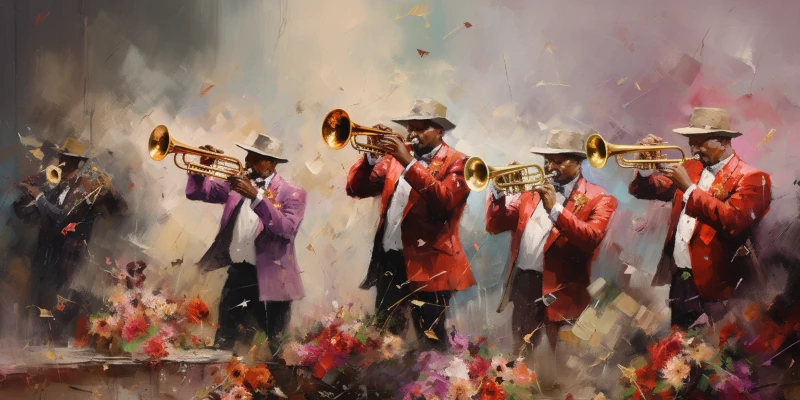
This post may contain affiliate links and we may receive compensation if you purchase products linked to below. As an Amazon Associate, we can earn from qualifying purchases. Please see our Terms and Conditions for details.
Have you ever stopped to think about the trumpet’s rich legacy and what impact it’s had on music—past and present? This gleaming instrument, known for its vibrant sound and versatile range, has been coloring our music—and our lives—for ages. From its early days echoing battle cries in ancient times to setting the rhythm in today’s orchestras and jazz bands, the trumpet is more than just a musical tool.
And the musicians who’ve mastered the trumpet have made its influence possible. Trumpeters have written and played melodies that resonate deep within our souls. Their journeys, brimming with fervor, commitment, and at times, heartbreak, have sculpted the musical realm.
Curious about its past and the people who made the trumpet sing over the years? Let’s walk through the trumpet’s varied history and the musicians who took it center stage.
The golden era of jazz and trumpet
You can’t begin to understand the trumpet without seeing—or better yet, hearing—its role in jazz.
Originating from the heartbeats of African-American neighborhoods in New Orleans during the late 1800s and early 1900s, jazz found its perfect partner in the trumpet. Able to both whisper tender tunes and belt out powerful solos, the trumpet quickly became a jazz ensemble’s shining star.
As jazz’s melodies echoed from New Orleans’ lively lanes to Harlem’s hopping hubs, trumpeters weren’t just playing notes. They were painting stories—stories of love, tales of heartache, and anthems of joy.
Their melodies were crucial in forming jazz’s many shades, from the energetic swing to the intricate bebop. And how about their legacy? It’s alive in every jazz note played today.
From the rhythmic beats of ragtime to bebop’s unrestrained riffs, the trumpet was always at the forefront. It sang the loudest, wept the deepest, and danced with unmatched zest. And steering this musical ship were the trumpet virtuosos, each adding their distinct flair and vision.
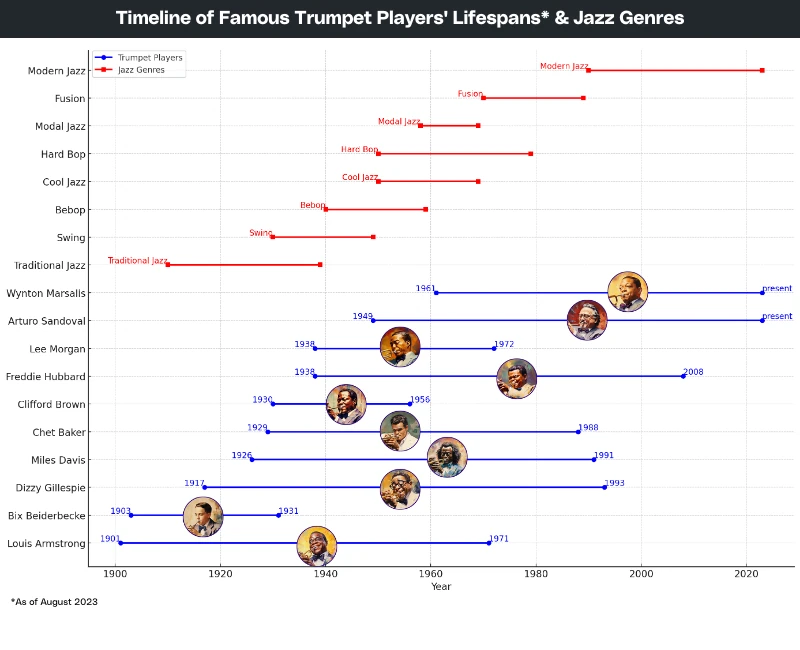
10 Famous trumpet players
Now that we’ve set the stage by introducing the trumpet’s influence on and lasting importance in the world of jazz, let’s talk about the artists that made it so:
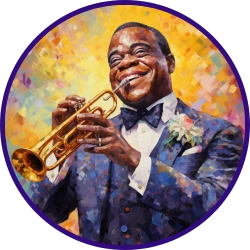
1. Louis Armstrong (1901 – 1971): The pioneer
Louis Armstrong, affectionately known as “Satchmo” or “Pops,” stands tall as a jazz titan. Born in 1901 in New Orleans, Armstrong’s rise from a challenging youth to jazz’s poster boy is a tale of grit and genius.
But Armstrong wasn’t just about the trumpet. His rhythm, his groundbreaking solos, and yes, that uniquely raspy voice paired with a beaming smile, made him a global figure in jazz.
Some of his crowning jewels include collaborations with the Hot Five and Hot Seven bands—works that are etched in jazz’s golden records. If you’re keen to get lost in Armstrong’s melodies, tunes like “What a Wonderful World” and “West End Blues” are a must.
Biography: Louis Armstrong
For further reading, I recommend a dive into Louis Armstrong: An Extravagant Life by Laurence Bergreen. This biography tells a fascinating story of Armstrong, the jazz pioneer, and the cultural giant of his era.
Armstrong’s life was as colorful as his music. He grew up on his own in New Orleans and lived much of his life on the edge. Bergreen’s narrative captures the essence of the man who was a workaholic, both humble and passionate about the trumpet.
This book really gave me a greater appreciation of the instrument and Armstrong’s place in the history of jazz.
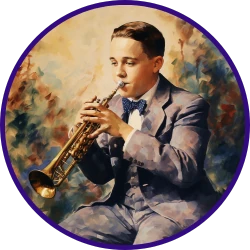
2. Bix Beiderbecke (1903 – 1931): The early jazz virtuoso
Bix Beiderbecke’s trumpet didn’t just play. It told tales of the Roaring Twenties. Beiderbecke was born in 1903 in Davenport, Iowa, and his melodies echoed the spirit of an era. His solos had fantastic tone and inventive melodies. And his presence in the jazz scene, though short lived, was unmistakable.
Tracks like “Singin’ the Blues” and “I’m Coming Virginia” are pure Bix magic, tunes that have stood the test of time. But like many legends, Bix’s story had its shadows, with alcoholism claiming him at just 28.
Thought his life and career were short, he left an undeniable mark on the world of jazz.
Biography: Bix Beiderbecke
Step into the Roaring Twenties with Bix: The Definitive Biography of a Jazz Legend by Jean Pierre Lion. Lion captures the essence of Beiderbecke’s lyrical style and innovative approach.
The book gives a lot of insight into the early days of jazz trumpet. And I’d say it stands as the best available work on Beiderbecke’s life.

3. Dizzy Gillespie (1917 – 1993): The bebop innovator
Ever heard of John Birks “Dizzy” Gillespie? He wasn’t just a famous black trumpet player. In multiple ways, he changed jazz music forever.
Hailing from South Carolina in 1917, Dizzy’s foray into jazz was fueled by an unquenchable thirst for innovation. He’s especially remembered for his unmistakable puffed cheeks and uniquely bent trumpet bell (related: Trumpet Bells and Their Differences).
Alongside Charlie Parker, Dizzy pioneered bebop, turning jazz from foot-tapping numbers to intricate, rapid-fire musical journeys. Tracks like “A Night in Tunisia” and “Salt Peanuts” are pure bebop magic, a testament to his genius.
But Dizzy wasn’t just about notes. He was a bridge, using his melodies to connect cultures during the Cold War era. If you’re new to his rhythm, albums like “Dizzy Gillespie and Charlie Parker” and “Birks’ Works” are your gateway.
Biography: Dizzy Gillespie
If you’re eager to delve into the life of the bebop innovator, To Be or Not to Bop: Dizzy Gillespie Autobiography by Dizzy Gillespie is a great starting point. It’s also an excellent resource for learning the history of bebop.
A memoir, this book starts with Gillespie’s candid account of his life and later includes interviews with many of his peers and friends, which are really interesting. Simply put, if you’re a fan of jazz, this book is one I think you’ll want to add to your collection.

4. Miles Davis (1926 – 1991): The ever-evolving jazz maestro
One of my all-time favorite musicians, Miles Davis, with that effortless cool and ever-shifting musical palette, epitomizes music’s boundless spirit.
Born in 1926 in Illinois, Miles’s musical odyssey spanned half a century, each era echoing a unique tune. From the mellow vibes of “Birth of the Cool” to the revolutionary “Kind of Blue” and the electric beats of “Bitches Brew,” Miles defied boxes. His music spanned a range of styles and genres, including rock, funk, and even classical.
If you’re eager to traverse Miles’s vast musical universe, albums like “Kind of Blue,” “In a Silent Way,” and “Bitches Brew” are your compass.
Biography: Miles Davis
If you’re intrigued by the enigma that was Miles Davis, Miles: The Autobiography co-authored by Miles Davis and Quincy Troupe is a must-read.
At around 450 pages, this isn’t just a biography about the life of the legend that was Miles Davis. It’s a chronicle of that whole period of American history where Davis and other famous black artists struggled to find their way into the spotlight.
Don’t be put off by the length of this book. It covers a lot of ground on the history of jazz, its rise and decline, and Davis keeps it very engaging for readers throughout.
Davis doesn’t shy away from profanity and talking about violence and drugs. But if you’re looking for a very “real” account of his experience, this is the book for you.
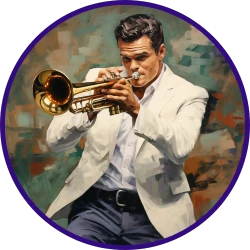
5. Chet Baker (1929 – 1988): The melodious enigma
When Chet Baker played his trumpet, it whispered tales of love, longing, and life. Born in 1929 in Oklahoma, Chet’s early days in jazz saw him soaring, especially with the Gerry Mulligan Quartet.
His take on “My Funny Valentine” is timeless and somehow both haunting and soothing. But like many trumpet players in our list, Chet’s life had it’s highs but was also rife with struggles. The world watched him both struggle with addiction and make soul-stirring comebacks in the ’70s and ’80s.
He stood out in the cool jazz genre with laid-back beats and mellow melodies. And his tunes, often blended with a touch of the blues, loved by many. Albums like “Chet Baker Sings” and “It Could Happen to You” are great entry points into Baker’s music.
Biography: Chet Baker
Check out Deep in a Dream: The Long Night of Chet Baker by James Gavinfor a deep and personal look at the legend that was Chet Baker. The biography includes lots of interviews from people who had a holistic understanding of the man—seeing both the impressive and the more despairing parts of his character.
I must admit, this is a tougher read at times, given how dark and dysfunctional Baker’s life often was. But I’d recommend it if, for no other reason, to gain a better understanding of the sentiment behind his music. This book will almost definitely change the way you think about the man—for better or worse.
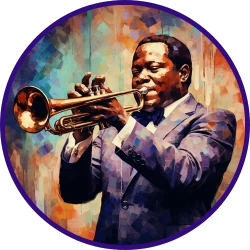
6. Clifford Brown (1930 – 1956): A life cut short
Like Chet Baker’s, Clifford Brown’s story is a sad one of brilliant music and a life cut short. Born in Wilmington, Delaware in 1930, at just 25, a tragic car accident silenced his trumpet. But the melodies he crafted? Timeless.
Another famous black trumpet player on our list, Brown’s fluid technique and soulful melodies brought a warmth to bebop that was both refreshing and deeply emotive. His playing included intricate improvisations and a sense of swing, adding a layer of depth to 1950s jazz. And his partnership with drummer Max Roach birthed bebop classics.
Tunes like “Joy Spring” and “Daahoud” are pure Clifford magic, essentials for every jazz lover. And while his time was short, his influence on trumpet maestros that followed is monumental.
Biography: Clifford Brown
If you’re keen to learn more about the life of Clifford Brown, I would recommend Clifford Brown: The Life and Art of the Legendary Jazz Trumpeter by Nick Catalano. Though it could use a bit better editing, this might be the only book about Brown’s life that I’ve seen available online.
It includes lots of great photos of the trumpet player and is well researched. And like that of many other famous black trumpeters mentioned here, Brown’s biography touches on the discrimination he faced coming up as an artist.
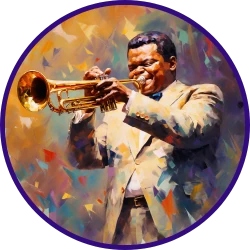
7. Freddie Hubbard (1938 – 2008): The post-bop prodigy
Freddie Hubbard’s trumpet tells tales of the post-bop era like no other. Born in 1938 in Indianapolis, Hubbard’s warm tones and flawless technique made him a jazz maestro.
Freddie Hubbard’s trumpet voice was characterized by a bold, fiery intensity, often pushing the boundaries of the instrument with his explosive high notes and rapid-fire runs. His ability to weave intricate solos, combined with a rich, warm tone, made him a master of the brass.
Whether it’s his early collaborations with giants like John Coltrane and Herbie Hancock or leading the charge in albums like “Red Clay” and “First Light,” Hubbard’s mark on jazz is monumental. His genius was in melding hard bop, post-bop, and even fusion elements, crafting tunes that resonate across genres.
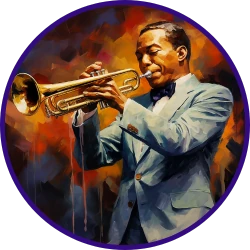
8. Lee Morgan (1938 – 1972): The hard bop prodigy
Ever tapped your feet to the hard bop beats of the 1960s? Chances are, you’ve felt the rhythm of Lee Morgan.
Born in 1938 in Philadelphia, Morgan was a whirlwind on stage, his trumpet blazing with passion. His style was unique in that he would often fluctuate between highs and lows within a single solo.
He could play with an added blend of soul, blues, and gospel influences that made him a unique artist among other jazz musicians of his time. His iconic album, “The Sidewinder,” especially that catchy title track, is hard bop gold.
But like many famous artists, Morgan’s journey wasn’t without its troubles. And while his story ended too soon at 33, his melodies live on, echoing his genius.
Biography: Lee Morgan
Lee Morgan: His Life, Music and Culture by Tom Perchard will give you a comprehensive look into Morgan’s life from early days to his later years and death. It includes plenty of interviews, including with fellow jazz musicians who played with Morgan.
I wish the author had given more care to cover Morgan’s music and playing abilities. He’s, at times, maybe a bit too critical in his analyses of Morgan’s work. But all in all this is a solid account and an enjoyable read for anyone interested in ‘50s and ‘60s jazz and this trumpet player, in particular.

9. Arturo Sandoval (1949 – Present): The Latin Jazz maestro
Arturo Sandoval’s trumpet doesn’t just play; it dances to the vibrant beats of Latin jazz. Hailing from Artemisa, Cuba, in 1949, Sandoval’s tunes are a blend of virtuosity and Afro-Cuban rhythms.
His playing style is characterized by rapid-fire notes, punctuated with soulful pauses, capturing the essence of his Cuban heritage. Each note tells a story, from the sultry evenings of Havana to the bustling energy of Miami.
And when legends like Dizzy Gillespie join the mix? Pure magic. Tunes like “A Mis Abuelos” and “Marianela Says Goodbye” are pure Sandoval, echoing his range and flair.
If you’re keen to explore his melodies, albums like “Danzón” and “Hot House” are a treat.
Biography: Arturo Sandoval
If you’re curious to learn more about Arturo Sandoval and his relationship with Dizzy Gillespie, I’d suggest reading Dizzy Gillespie: The Man Who Changed My Life: From the Memoirs of Arturo Sandoval.
The book tells the story of how the two musicians first met in Cuba, how Gillespie helped Sandoval defect and immigrate to the United States and how their careers went on to develop. Besides offering a fascinating story, the book includes some great photos of Sandoval with Gillespie and others over the years.
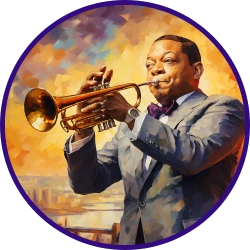
10. Wynton Marsalis (1961 – Present): Bridging classical and jazz
Ever heard a trumpet sing both classical symphonies and jazzy tunes with equal flair? That’s Wynton Marsalis for you.
Born in the musical heartland of New Orleans in 1961, Marsalis showcases the trumpet’s duality like no other. He has this uncanny knack for making his trumpet chat in the sophisticated language of classical and then switch to the playful banter of jazz. It’s like he’s got Mozart and Miles Davis having a jam session in his soul. And his shelf, glittering with Grammy Awards from both realms, is proof.
Albums like “Black Codes (From the Underground)” echo his jazz genius, while his classical trumpet concertos are a testament to his technical prowess.
Biography: Wynton Marsalis
Just about the only biography of Wynton Marsalis I’ve seen available online is Wynton Marsalis: Skain’s Domain: A Biography by Leslie Gourse.
Gourse delves deep into Marsalis’s life as a black trumpet player early in his career performing in a quintet through to becoming Artistic Director of Lincoln Center’s jazz program and his subsequent awards and accolades. You’ll also read interviews from family and friends of Marsalis and also learn about his personal relationships, including with Actress Victoria Rowell.
It’s an all-around immersive read and a good one to check out, whether you’re interested in Marsalis’s work and life or more jazz more broadly.
The evolution of trumpet techniques
The trumpet, as an instrument, has seen a lot of changes over the hundreds of years since its inception. From its early origins as animal horns and shells to the sleek, valve-equipped instrument we recognize today, the trumpet’s journey mirrors the broader evolution of music itself.
Techniques have evolved, too. Early trumpeters relied heavily on their embouchure (the way they formed their lips) to produce different pitches. The introduction of valves in the 19th century brought trumpeters a wider range of notes with greater ease.
Today’s master trumpet players are jazzing things up, blending the latest advancements with some cool tricks up their sleeves—think extended tonguing, a bit of flutter, and a dash of growl.
And jazz is the ultimate playground where these trumpet techniques come alive and dance. From the smooth, melodic lines of cool jazz to the rapid, complex improvisations of bebop, each sub-genre has brought with it new techniques and approaches to playing.
The trumpet in different cultures and genres
We can see trumpet’s universal appeal from its presence across various cultures and musical genres. From the conch shells blown in Pacific Islander ceremonies to the haunting melodies of the Armenian duduk, variations of the trumpet are found worldwide.
In Latin music, the trumpet features strongly in genres like mariachi and salsa, where it provides both rhythm and melody. Afrobeat, a genre that fuses West African musical styles with jazz and funk, prominently features the trumpet in its brass sections. The Balkan region, with its rich musical tapestry, has its own trumpet traditions, most notably in Serbian and Macedonian brass bands.
Modern trumpet players, influenced by these global sounds, often incorporate diverse techniques and melodies into their playing, creating a fusion of styles that’s both fresh and familiar.
The role of women in trumpet music
Think trumpet, and traditionally, it might conjure images of male maestros. But history has its unsung heroines who’ve not only played the trumpet but played it with flair, challenging norms and building their legacy.
Take Valaida Snow, for instance. Hailed as the “Queen of the Trumpet” back in the 1930s, she wasn’t just about the notes. She was a spectacle, a blend of skill and stagecraft.
Then there’s Cynthia Robinson, who, with Sly and the Family Stone, gave the trumpet a groovy twist in the psychedelic funk era of the ’60s and ’70s.
Fast forward to today, and women aren’t just playing. They’re leading, teaching, and inspiring. They’re showing the world that when it comes to talent, gender doesn’t play a note.
The future of trumpet music
The trumpet isn’t just basking in its golden past; it’s jazzing up for the future. Today’s horn players are pushing the margins of what we might consider traditional styles of play, like mixing in some electronic grooves and dabbling in fresh genres.
Picture this: the timeless elegance of a trumpet serenading alongside hip-hop beats or indie rock riffs.
Sounds wild, right? But that’s the tune of today. It’s an exciting time. Changing technology has given trumpets a 21st-century twist, broadening its versatility. Sure, its soul still sways to classical and jazz, but its eyes? They’re set on a horizon where tradition meets trailblazing.
Frequently asked questions
The trumpet, being a unique and versatile instrument, naturally sparks curiosity. Here are answers to some commonly asked questions:
- How does a trumpet produce sound? Sound is produced when the player’s lips vibrate against the mouthpiece, creating a buzzing sound. This sound travels through the instrument and is amplified by the bell.
- Why are there only three valves? The three valves of the trumpet allow the player to produce different pitches by altering the length of the tubing. By pressing down on different combinations of valves, a player can produce a full chromatic scale.
- Is the trumpet hard to learn? Like any instrument, the trumpet takes some serious practice and dedication. While just getting a sound—any sound—out of a horn might seem easy, mastering the instrument’s range and techniques is a different story. And it will take time for you to get over the basic and to a point where you start to really enjoy playing.
Still curious? Check out our more complete list of frequently asked questions and their answers.

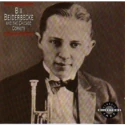
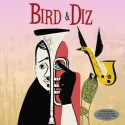
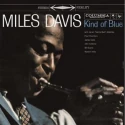
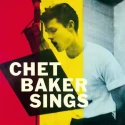
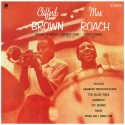



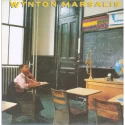
How about Armando Ghitalla, Harry James, and Al Hirt?
Hey Richard – thanks for your message. These are three great suggestions! We might just update the article to include these.